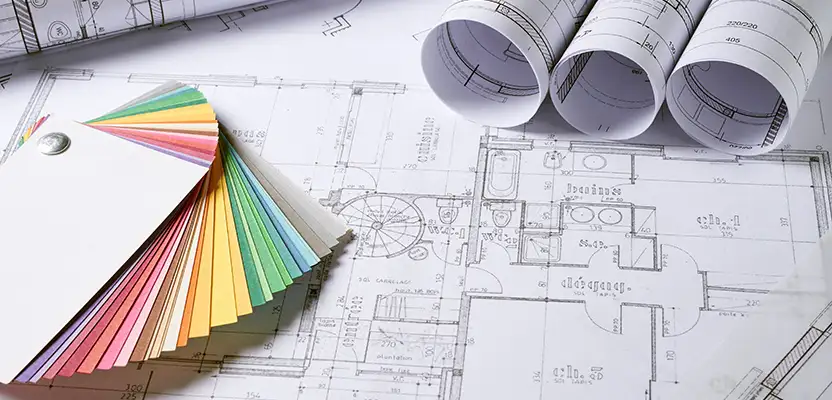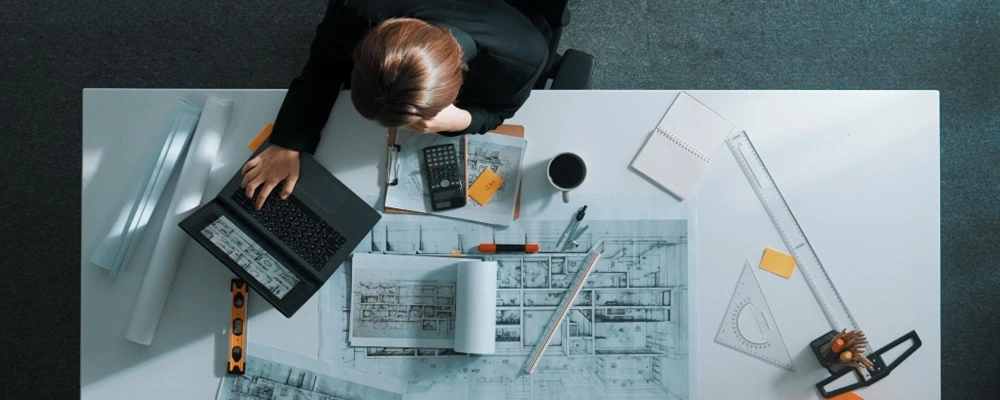Architect-Approved Home Improvement Ideas
Architect-Approved Home Improvement Ideas
Blog Article
Discover the Essential Abilities and Qualities Every Architect Need To Have
As a designer, you know that success in your area goes beyond just technological skills. Each quality plays an essential duty in your capability to design rooms that influence and function well.
Imagination and Development
Creativity and advancement are at the heart of style, driving the style of rooms that inspire and function flawlessly. As a designer, you'll need to assume outside the box, pressing limits to create special solutions for your customers. You'll constantly check out brand-new materials, strategies, and technologies to improve your designs. Accepting technology implies remaining ahead of patterns while being adaptable to transform.
You'll likewise attract inspiration from various resources-- nature, art, and also day-to-day life can spark fresh ideas. This ability to blend creativity with usefulness allows you to address complicated troubles, guaranteeing your designs satisfy both functional and aesthetic needs.
Strong Communication Skills
While creating exceptional rooms calls for creative thinking, solid interaction abilities are equally as important for designers. You need to communicate your ideas plainly to customers, service providers, and group participants. Paying attention is simply as vital; understanding your customer's vision aids you develop styles that really satisfy their needs.
You'll typically have to discuss complex concepts in a manner that's easy to grasp, whether you exist a proposition or going over products. Effective communication cultivates collaboration, ensuring every person gets on the exact same page throughout the project.
Structure partnerships is necessary, as well. When you establish trust and relationship, customers are much more likely to share their worries and comments, resulting in better outcomes.
Lastly, do not ignore the power of body movement and aesthetic help. They can improve your message and make your discussions a lot more interesting. Solid communication abilities not just raise your designs yet also reinforce your expert relationships in the architectural globe.
Technical Proficiency in Style Software
As you browse the ever-evolving globe of design, understanding design software program becomes essential for converting your creative concepts right into tangible strategies. Acquainting on your own with programs like AutoCAD, Revit, and SketchUp will not just boost your design capacities however additionally enhance your workflow. These tools allow you to produce comprehensive drawings, 3D models, and even simulations that can help you envision and offer your concepts more properly.
Exceling in these software applications also improves your partnership with professionals and engineers, as everybody can work from the same electronic structure. Additionally, your capability to adjust to brand-new innovations will keep you affordable in the field. Consistently upgrading your skills and checking out new features can establish you besides your peers, ensuring your layouts are exact and cutting-edge. Ultimately, technical effectiveness in layout software is a keystone of effective architecture, helping you bring your visions to life.
Understanding of Design Concepts

Understanding design principles also allows you to anticipate prospective challenges early in the design procedure. You can make informed selections that enhance your layouts when you're conscious of just how different products behave under numerous conditions. Your layouts ought to not just be visually pleasing yet likewise practical and lasting.
Additionally, a solid grasp of design principles permits you to introduce within constraints. You can push innovative limits while still sticking to security requirements. Ultimately, this understanding enhances your building technique and sets you apart in an affordable area.
Project Administration Talents
Effective job monitoring abilities are crucial for architects, enabling you to manage all aspects of a project from conception to conclusion. You'll require to collaborate with various stakeholders, including clients, engineers, and service providers, ensuring everyone's on the same page. Setting clear goals, timelines, and budgets is fundamental; it helps you keep the project on track and within range.
As an architect, you must additionally be experienced at threat management, identifying potential concerns prior to they intensify. Solid communication skills are essential, enabling you to articulate your vision and inspire your team. You'll benefit from being organized and detail-oriented, as this aids enhance procedures and prevent costly hold-ups.
In addition, versatility is essential; tasks commonly evolve, and being adaptable enables you to respond properly to adjustments. Eventually, your project monitoring abilities can considerably affect the success of your architectural undertakings, ensuring you deliver top quality results on time and within spending plan.
Interest to Detail
While taking care of jobs is important, your focus to detail can make a significant distinction in the quality of your job. Every line you draw, every product you choose, and every little spec you note adds to the overall success of a task. You need to be meticulous, making certain that your styles not just meet visual standards yet likewise stick to building guidelines and codes.
Missing even a tiny detail can cause costly modifications or safety and security problems down the line. By growing a keen eye for detail, you boost your ability to identify potential problems before they rise. This watchfulness not just conserves you time and resources however additionally builds your track record as a reputable Architect. Bear in mind, it's typically the tiniest information that elevate a project from great to exceptional. Accept this skill, and let it direct your layout process, making certain that your vision is executed flawlessly.
Adaptability and Problem-Solving Skills
As a designer, you'll typically deal with unforeseen modifications in layout and job demands. Your ability to embrace these shifts and discover cutting-edge options is essential for success. Remaining versatile in your method not just improves your analytic abilities yet likewise maintains your jobs on track.
Embracing Adjustment in Design
Welcoming modification in style is necessary for architects, specifically when steering developing customer demands and arising modern technologies. You require to grow versatility, as jobs typically move the original source instructions based upon new insights or constraints. Being open to change allows you to check out cutting-edge methods and create services that reverberate with your customers.
When confronted with difficulties, your analytical abilities enter play. You'll usually need to reconsider concepts and adjust plans on the fly, making sure that the final result straightens with the client's vision while meeting safety and security and regulative requirements. By being resourceful and adaptable, you not only enhance your layouts but additionally develop count on with your customers, verifying that you can browse the complexities of modern design efficiently.
Innovative Solutions to Challenges

Flexibility in Job Monitoring
While navigating the complexities of project administration, flexibility ends up being a crucial asset for designers. You'll often face unanticipated challenges, from read layout adjustments to budget plan restraints, calling for quick reasoning and flexibility. Welcoming modification enables you to pivot your strategies and discover innovative options, ensuring task success.
Solid analytical abilities are vital; they enable you to examine circumstances, evaluate choices, and apply reliable remedies on the fly. When functioning with varied redirected here groups, being open to comments and alternate ideas cultivates collaboration and sparks creativity.
Frequently Asked Inquiries
What Educational Background Is Required to Come To Be a Designer?
To come to be an architect, you'll require at the very least a professional degree in architecture, commonly a Bachelor's or Master's. Finishing a teaching fellowship and obtaining licensure via tests is necessary for your occupation advancement.
Just How Important Is Networking in the Style Area?
Networking's essential in architecture. It assists you construct partnerships, discover job possibilities, and gain understandings from skilled specialists. By getting in touch with others, you improve your career potential customers and remain upgraded on industry trends and advancements.
What Are the Common Occupation Paths for Architects?
Common career paths for architects consist of design functions in firms, task monitoring, urban preparation, and specialized locations like lasting architecture. Architect. You might likewise discover training or consulting, depending on your experiences and interests
Exactly How Can Designers Remain Upgraded With Market Patterns?
To stay updated with market patterns, you must regularly attend conferences, join professional associations, subscribe to relevant magazines, and involve with on-line discussion forums. Connecting with peers also assists you get understandings into emerging developments in architecture.
What Function Does Sustainability Play in Modern Design?
Sustainability shapes modern architecture by emphasizing power performance, source conservation, and environmentally friendly materials. You'll create rooms that lessen environmental impact, enhance owner health, and react to climate challenges, making your layouts a lot more impactful and relevant.
While making exceptional areas requires creative thinking, strong communication abilities are just as essential for architects. Solid communication abilities not only boost your styles yet likewise reinforce your expert relationships in the building world.
Effectiveness in design software program lays the groundwork for a much deeper understanding of engineering concepts, which is important for engineers.As a designer, you'll commonly deal with unanticipated modifications in layout and job needs.Accepting change in style is essential for designers, specifically when steering advancing client demands and emerging innovations.
Report this page